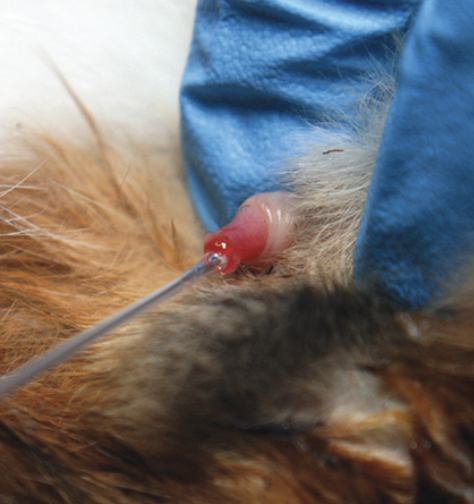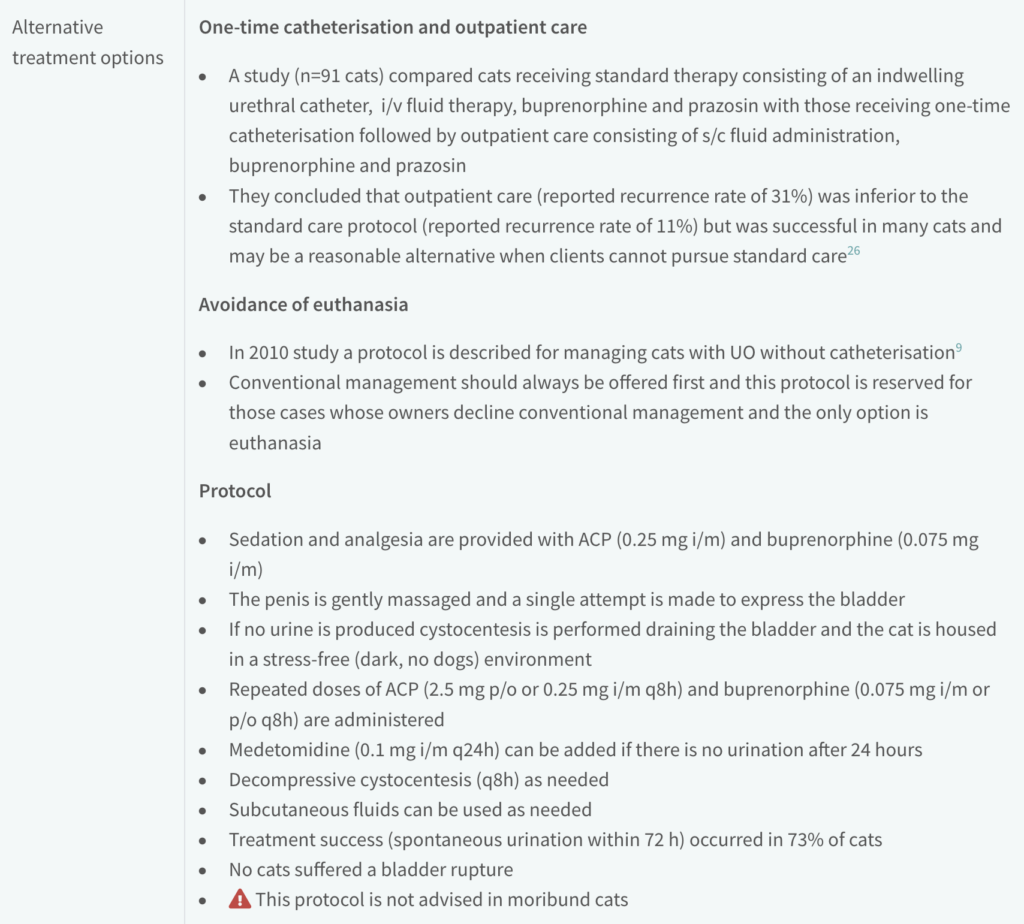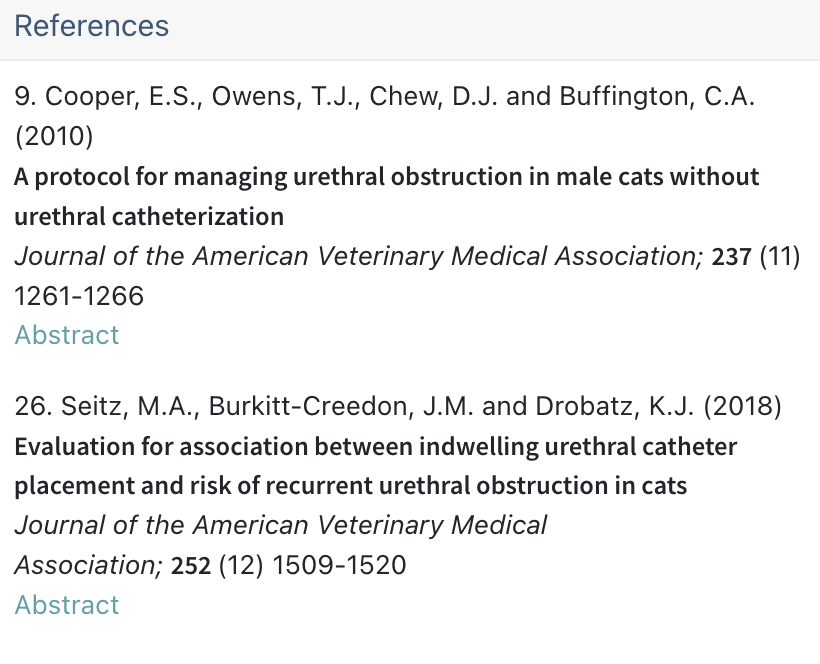FELINE URETHRAL OBSTRUCTION
Are there any alternatives to leaving a urethral catheter in situ after the management of feline urethral obstruction (FUO)?

Dilemma:
You have a client with a young male cat named “Tiger” diagnosed with recurrent feline urethral obstruction. She is committed to doing everything possible for her pet but is very concerned about the costs, having spent most of her insurance allowance on the previous episode a month ago. You recall that Tiger becomes extremely stressed and aggressive at the vet. While you have recommended catheterisation and intensive hospitalisation, the owner is asking if there are any other options available.
Ask VETbytes?
Use VETbytes to find evidence-based alternative treatments

Client communication
Discussing the treatment options for feline urethral obstruction with a client
Vet: I understand your concerns about the costs and your cat’s stress levels, especially since stress can be a trigger for feline urethral obstruction. Let’s discuss the treatment options so we can decide the best plan for you and for Tiger:
- Standard Intensive Hospitalisation: This is the option we chose last time, it involves placing a urethral catheter and leaving it in place, along with intravenous fluid therapy, pain management, and medications. This method has a low recurrence rate of about 11% and is the most effective way to manage feline urethral obstruction. However, it is also the most expensive and may increase stress for your cat due to hospitalisation.
- One-Time Catheterisation and Outpatient Care: This option involves a one-time catheterisation to relieve the obstruction, followed by outpatient care with subcutaneous fluids, pain management, and medications. While the recurrence rate is higher at 31%, it can still be successful for many cats and is less costly than intensive hospitalisation. It also allows your cat to stay at home, which may reduce stress. This method has not been studied extensively.
- Non-Catheter Protocol: If the above options are not feasible and the only alternative is euthanasia, there is a protocol that does not involve catheterisation. It includes sedation, pain management, gentle bladder expression or cystocentesis to relieve urine buildup, and maintaining a stress-free environment. This method has a success rate of about 73% for spontaneous urination within 72 hours. It is less ideal, hasn’t been studied well and should only be considered as a last resort.
Each of these options comes with its risks and benefits. Standard care is the most effective but also the most costly. Outpatient care is less expensive and reduces hospital stress but brings with it a higher chance of recurrence. The non-catheter protocol is a last-resort option to avoid euthanasia when other treatments are not possible.
What is the evidence?
